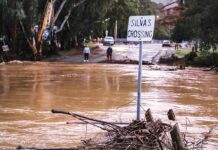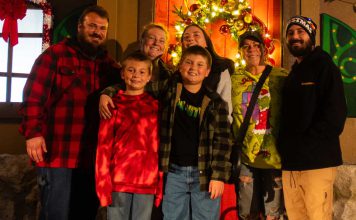Morgan Hill
– Coyote Valley resident Ken Saso wants his farm to become a
modern suburb – if only to protect it from becoming something less
desirable.
Morgan Hill – Coyote Valley resident Ken Saso wants his farm to become a modern suburb – if only to protect it from becoming something less desirable.
It’s not that Saso dislikes agriculture, or has a disdain for wide open spaces. But the days of economically viable farming have passed, and Saso and other property owners want a coordinated plan to prevent misuse of the 7,000 acres south of San Jose.
“It’s time to stop picking on the valley,” Saso said Thursday evening during the Coyote Valley Specific Plan community meeting at the Coyote Creek Golf Club. “This is the only area in the city of San Jose that hasn’t been taken care of. This is the only area that has to go it alone.”
For years, Coyote Valley property owners have paid taxes to San Jose without receiving full city services. At the same time, urban-planning efforts have fallen by the wayside as single-use projects, including a garbage dump, a power plant and an IBM campus, were approved.
“It’s time for Coyote Valley to benefit everybody,” Saso said. “And I think it will.”
San Jose is preparing long-range plans to bring 25,000 homes and 50,000 jobs north of Morgan Hill and west of U.S. 101. A 20-person task force, of which Saso is a member, has been guiding the multi-year planning effort under the direction of the San Jose City Council.
The Coyote Housing Group, a collaborative of 10 property owners, mostly builders, is sponsoring the plan. The group has invested $16 million in the process, starting in August 2003.
The long-awaited Coyote Valley environmental impact report is now open for public-review period scheduled to end June 29.
Thursday’s meeting was the first of two scheduled community forums to review the findings of the EIR. The next meeting will be held on May 2 at the Camden Community Center from 3pm to 5pm. The EIR can be found on the Coyote Valley Web site at www.sanjoseca.gov/coyotevalley/.
The EIR identifies 93 “significant impacts” of which 22 are found to be unavoidable, even with mitigation. Some 20 of the “significant impacts” are related to traffic issues.
The report shows Coyote Valley at build-out would generate 266,000 auto trips per day. About 38,000 trips per day would stop in Morgan Hill or Gilroy. Intersections on Monterey Road as far south as Gilroy would be affected. Additional freeway traffic is identified as unavoidable.
The study also identifies 33 “significant impacts” on biological systems. Habitat for burrowing owls, which California lists as a “species of special concern,” would be lost. More than 160 acres of wetlands and open water, and more than 150 acres of grasslands, would also be displaced.
Species that would be affected include coastal steelhead, red-legged and yellow-legged frogs, tiger salamanders, western pond turtles, golden eagles and bats.
The long list of findings did not surprise the roughly 30 people at Thursday’s community meeting. Many attendees, like Saso, are Coyote Valley property owners who have followed the planning for years and already knew a dense suburb for 80,000 people would drastically change the landscape.
Some of the property owners are more concerned about the San Jose City Council stalling on the plan now that its in the home stretch. The plan is expected to be finished this fall, but the city council will need to accept it and decide how to implement it. San Jose’s general plan specifies housing cannot be developed in Coyote Valley before 5,000 jobs are established.
Additionally, San Jose has a policy that the city shall have a budget surplus projected for five years after development starts.
If the city council changes those triggers, San Jose planners would have to do additional environmental review to understand what that means.
Even if it takes a few years, San Jose City Councilman Forrest Williams, co-chair of the Coyote Valley Specific Plan Task Force, is optimistic the plan will be approved and implemented. With 963,000 residents, San Jose is the nation’s 10th largest city, and regional population growth will boost its size in the decades to come.
“We need this,” Williams said, also referring to plans to develop the North First Street area, downtown and other parts of the city. “We are the technology capital of the world. But if we don’t take the challenges and do something about life in the future then we’ll be passed up.”












